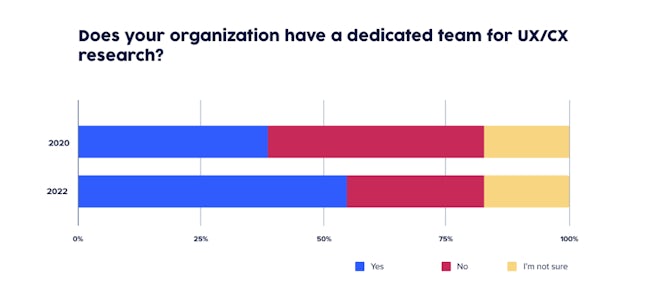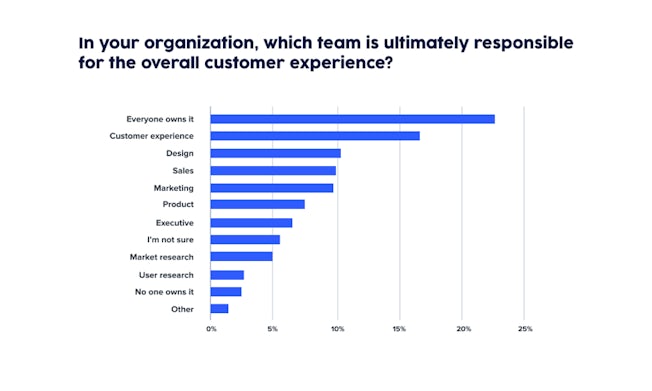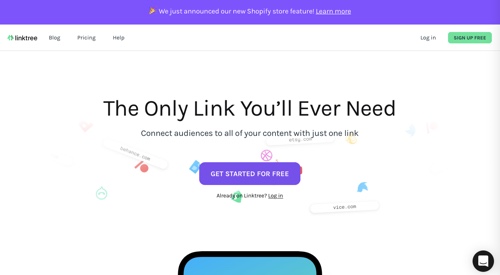Of course, this sort of research still needs a custodian, and research teams sound a note of caution in the survey, with a majority worrying that ‘democratizing research will result in misleading or faulty research’.
However, the sentiment is the right one, even if quality data and methodology is taken as a given. Operationalising customer experience research, taking it closer to BAU than innovation and project work, this is the right focus, something User Testing refers to as ‘the last mile of the CX maturity journey’.
Furthermore, there’s a lack of regular feedback on key experiences. Only 37% of designers say they test mobile experiences, and only 47% of product teams report that they’re regularly using customer feedback in concert with customer behaviour analytics.
CX grows in importance
No doubt real empathy with customers requires the right tools and metrics, but as User Testing highlights in its report, there is a deeper need to empower teams to gather insight and evangelize customer feedback.
There seems to be some form of contradiction here, as if intentions and investment haven’t yet fully translated to execution. Whilst more than half of respondents indicate they’re coordinated in their approach to CX and have a deep understanding of their customers’ journeys, no group (marketers, product teams, designers, executives or researchers) has a majority of people regularly testing the experiences critical to their roles.
The customer remains the most fascinating part of the job for marketers and product teams, and certainly the most important.

It’s not all rosey amongst researchers, marketers and product teams though
There’s a danger that customer insight and customer experience research are seen as respectively the first and last things to tick off on a waterfall project management plan, rather than an ongoing concern.
Leadership obviously has a pivotal role in setting customer-centric culture and there are many tangible ways to do so. At Econsultancy Live last week, one business leader talked about hosting a ‘customer day’, a kind of festival of insight. This is the sort of initiative that could prove crucial in a hybrid workplace, as a bulwark against apathy.
According to User Testing and its 2022 CX Industry Survey, executives are well aware of the importance of customer experience to stay competitive and grow. More than three quarters of them said CX is a top investment area (78%) and that customer feedback should be used to inform every decision (76%).
There is no quick fix for culture and CX ownership
Frequency of research is increasing, too. And organizations seem more bullish on the whole about their CX maturity, with a 50% improvement of teams reporting they’re Optimized or Visionary between 2020 and 2022 (though still less than half the sample).

After the past two decades of digital transformation, marketers can sometimes seem stuck in a loop – building and launching new digital products, or implementing new martech, before moving on to the next project.
But there are still some signs of frustration amongst researchers; less than half (44%), say that they can keep up with the requests they get for research projects.
The demand for and the realisation of the importance of insight seems to be growing. Having a dedicated team for UX/CX research has increased by 39% between 2020 and 2022.
Have marketers become too far removed from their customers? Too focused on delivery at the expense of discovery?
For CX strategy to filter through to execution requires a culture of customer centricity. Ultimately, this may mean that everyone in the organisation takes a stake in customer experience – indeed amongst a range of responses, ‘everyone owns it’ was the most popular (23%) when teams were asked who is ultimately responsible for CX.
This may entail regular ‘show and tell’ meetings, researchers offering training to other teams, templates and repeatable steps that allow small tests on a regular basis, as well as simply myriad methods of sharing results – from video and feedback viewing parties, to quick sharing via messaging platforms.



![[Infographic] 30 Proven Ideas to Increase Ecommerce Conversions](https://research-institute.org/wp-content/uploads/2022/08/infographic-30-proven-ideas-to-increase-ecommerce-conversions.jpg)

